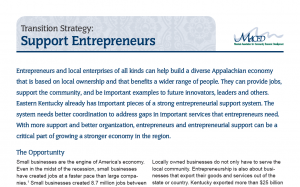SOAR Report Released: What’s Next?
Kentucky Governor Steve Beshear and Congressman Hal Rogers hosted a press conference, with a guest appearance from U.S. Agriculture Secretary Tom Vilsack, earlier today to release the final report of the Shaping Our Appalachian Region (SOAR) Summit. The summit, hosted in Pikeville last month, brought together 1,700 folks concerned about the region’s future. While largely deemed a success, many – including us – wondered what would come of it. Would it just be another photo op, or would we actually see some action taken to diversify eastern Kentucky’s economy? So far, it seems like it may be the latter. On Wednesday, the Governor announced his plans to make the Mountain Parkway – a key artery from Winchester into Eastern Kentucky – four lanes for its entire length. And just a few hours ago, we learned that the Appalachian Regional Commission will get $10 million to improve broadband internet access in counties affected by the coal downturn. Both of these issues were touted as priorities from the podium at SOAR, and t’s encouraging to see movement on both those fronts. And today, we can read the full report from the SOAR conference. It’s a lengthy read, much of which is a thorough summary of the events of the day. But at the very beginning, the authors of the report make some key recommendations for how the SOAR Initiative should proceed: While there is significant long-term work to be done, first focus on the immediate crisis of job loss. There are low-hanging fruit...
Read More









